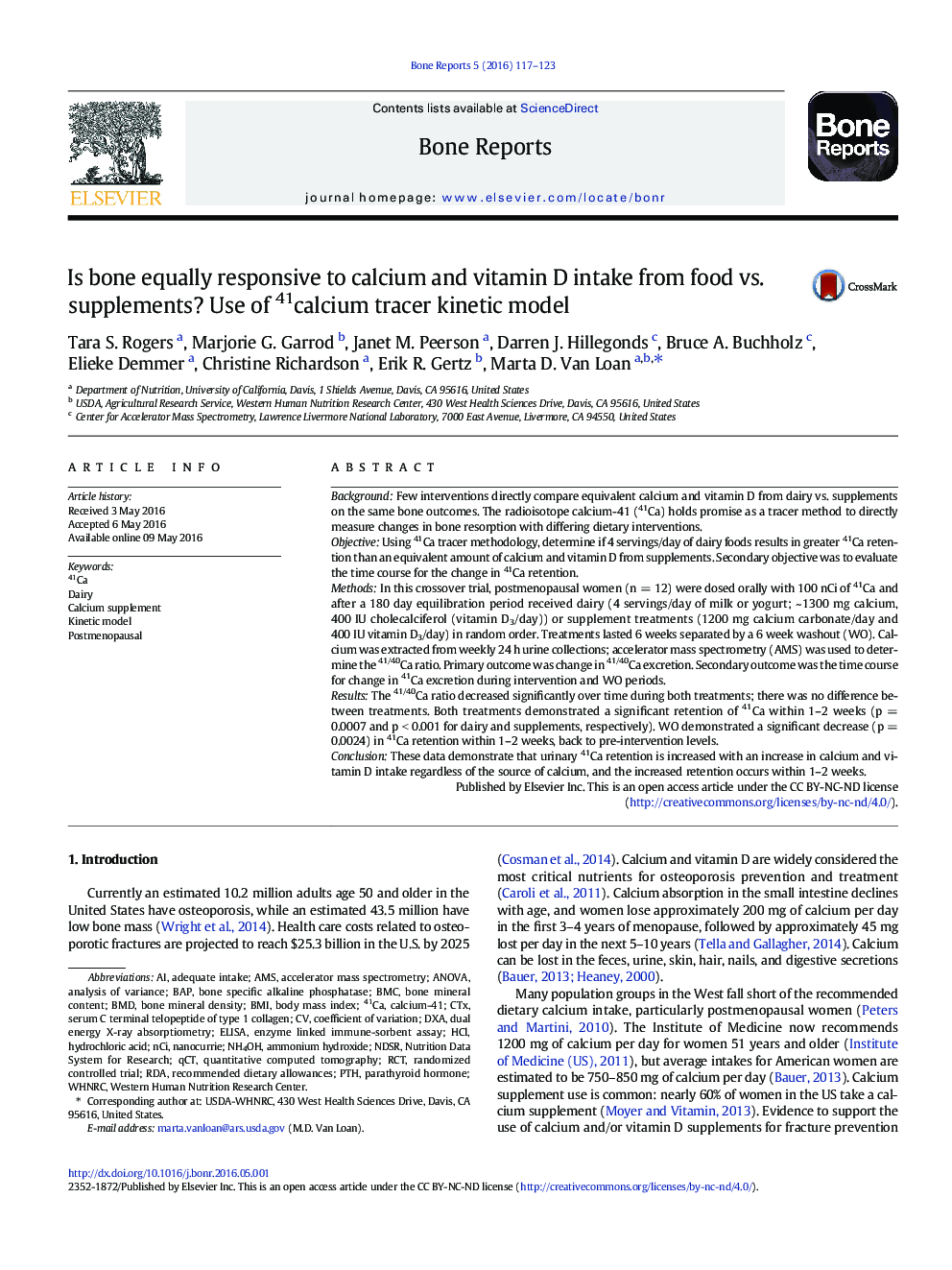| کد مقاله | کد نشریه | سال انتشار | مقاله انگلیسی | نسخه تمام متن |
|---|---|---|---|---|
| 2792309 | 1568667 | 2016 | 7 صفحه PDF | دانلود رایگان |

• Investigated, using 41Ca tracer, whether bone response to calcium and vitamin D differed based on the source of nutrients, foods vs. supplements.
• There was no difference in the bone response by treatment group.
• Both dairy foods and supplements resulted in reduce 41Ca excretion in urine.
• Reduction in 41Ca excretion occurred with 2 weeks of initiating the interventions.
• Removal of interventions resulted in 41Ca excretion returning to pre-intervention levels
BackgroundFew interventions directly compare equivalent calcium and vitamin D from dairy vs. supplements on the same bone outcomes. The radioisotope calcium-41 (41Ca) holds promise as a tracer method to directly measure changes in bone resorption with differing dietary interventions.ObjectiveUsing 41Ca tracer methodology, determine if 4 servings/day of dairy foods results in greater 41Ca retention than an equivalent amount of calcium and vitamin D from supplements. Secondary objective was to evaluate the time course for the change in 41Ca retention.MethodsIn this crossover trial, postmenopausal women (n = 12) were dosed orally with 100 nCi of 41Ca and after a 180 day equilibration period received dairy (4 servings/day of milk or yogurt; ~ 1300 mg calcium, 400 IU cholecalciferol (vitamin D3/day)) or supplement treatments (1200 mg calcium carbonate/day and 400 IU vitamin D3/day) in random order. Treatments lasted 6 weeks separated by a 6 week washout (WO). Calcium was extracted from weekly 24 h urine collections; accelerator mass spectrometry (AMS) was used to determine the 41/40Ca ratio. Primary outcome was change in 41/40Ca excretion. Secondary outcome was the time course for change in 41Ca excretion during intervention and WO periods.ResultsThe 41/40Ca ratio decreased significantly over time during both treatments; there was no difference between treatments. Both treatments demonstrated a significant retention of 41Ca within 1–2 weeks (p = 0.0007 and p < 0.001 for dairy and supplements, respectively). WO demonstrated a significant decrease (p = 0.0024) in 41Ca retention within 1–2 weeks, back to pre-intervention levels.ConclusionThese data demonstrate that urinary 41Ca retention is increased with an increase in calcium and vitamin D intake regardless of the source of calcium, and the increased retention occurs within 1–2 weeks.
Journal: Bone Reports - Volume 5, December 2016, Pages 117–123